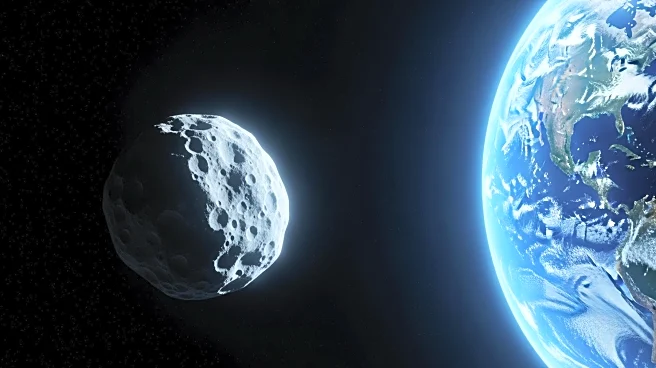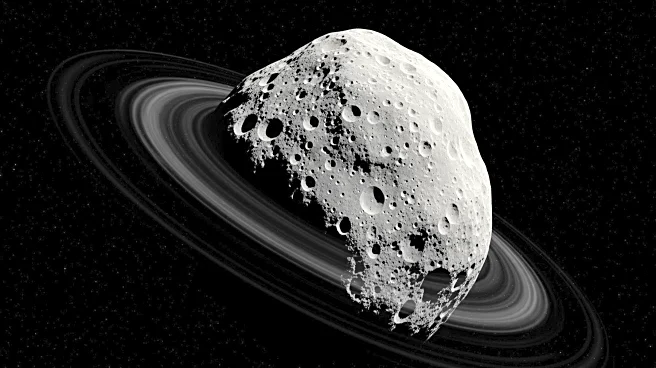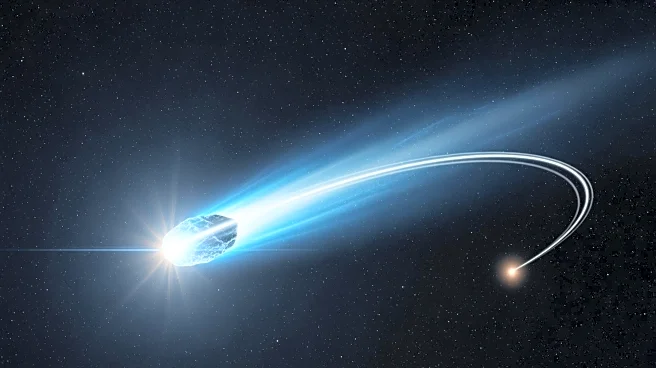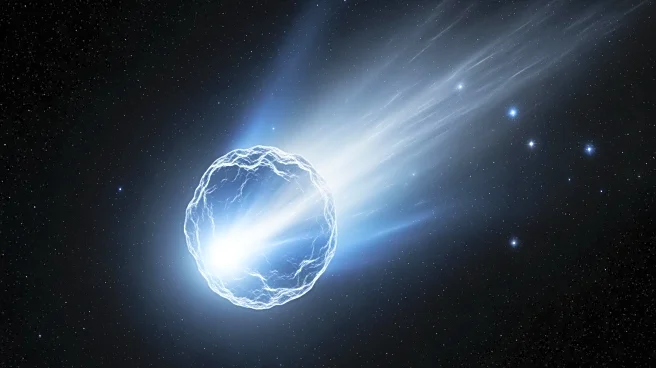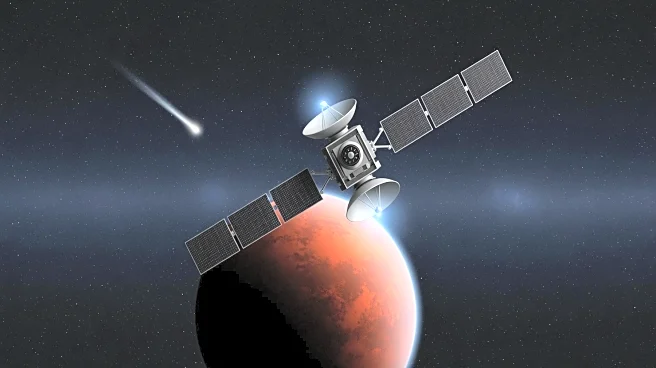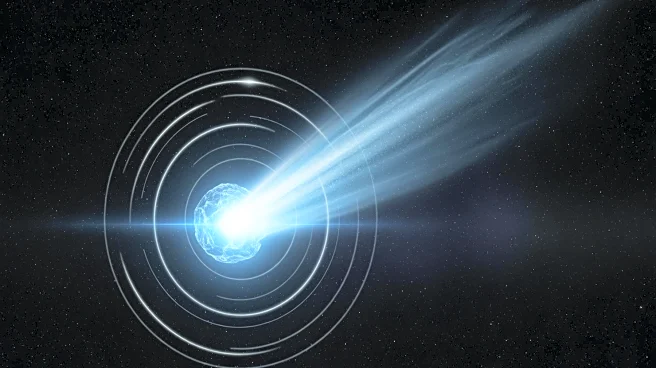What's Happening?
NASA has identified a new quasi-moon, 2025 PN7, which is a near-Earth asteroid that shares a co-orbital relationship with Earth. Unlike a true moon, a quasi-moon orbits the Sun but appears to loop around
Earth due to a 1:1 orbital resonance. This asteroid, approximately 19 meters in diameter, was discovered in late August 2025 by the Pan-STARRS survey in Hawaii. It is expected to remain in this quasi-satellite state until around 2083. Despite its proximity, 2025 PN7 poses no impact risk to Earth, as it maintains a safe distance while pacing the planet. The discovery has sparked renewed interest in Earth's transient small companions, which include both quasi-moons and mini-moons.
Why It's Important?
The identification of 2025 PN7 highlights the ongoing study of Earth's small celestial companions, which are valuable for understanding orbital dynamics and the near-Earth environment. These quasi-moons and mini-moons serve as natural laboratories for studying gravitational interactions and could be potential targets for future space missions. The discovery of 2025 PN7 adds to the list of known quasi-moons, which currently includes about seven such objects. As observational technologies improve, more quasi-moons are expected to be identified, providing further insights into the complex gravitational relationships within our solar system.
What's Next?
The Vera C. Rubin Observatory is anticipated to discover more faint co-orbital objects in the coming years, enriching the census of Earth's small companions. Additionally, China's Tianwen-2 mission, launched in May 2025, aims to rendezvous with another quasi-moon, Kamo'oalewa, to return samples by 2027. This mission could help determine whether some quasi-moons are lunar fragments. As more data becomes available, the understanding of 2025 PN7's long-term behavior and composition may be refined, contributing to the broader study of near-Earth objects.
Beyond the Headlines
The discovery of quasi-moons like 2025 PN7 challenges traditional perceptions of Earth's celestial environment, emphasizing the dynamic and transient nature of these small bodies. While they do not affect tides or pose immediate threats, they offer unique opportunities for scientific exploration and planetary defense strategies. The study of quasi-moons also raises questions about their origins, whether they are ordinary asteroids or remnants of lunar material, which could have implications for understanding the history of the solar system.
